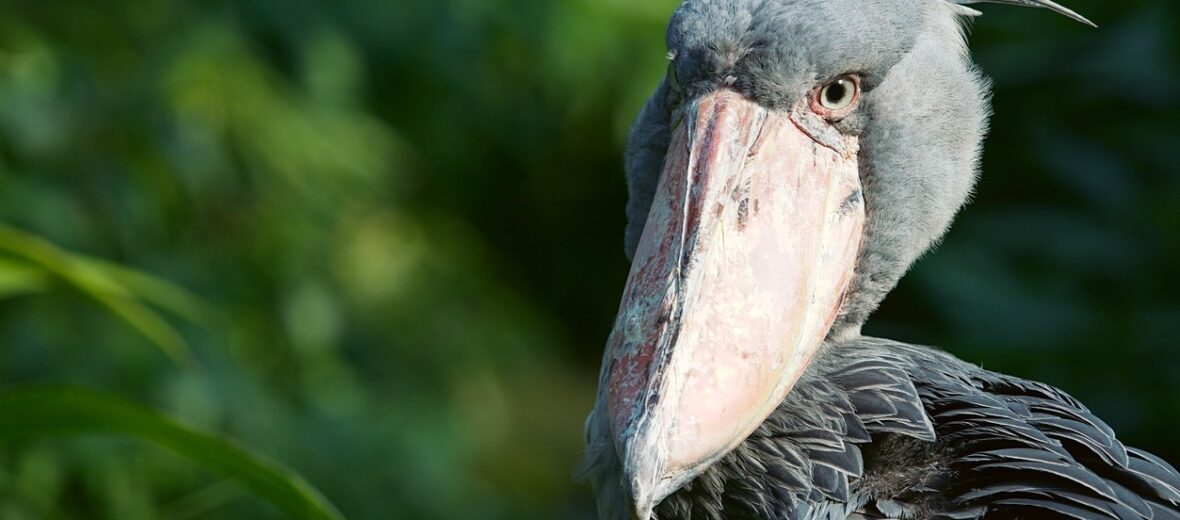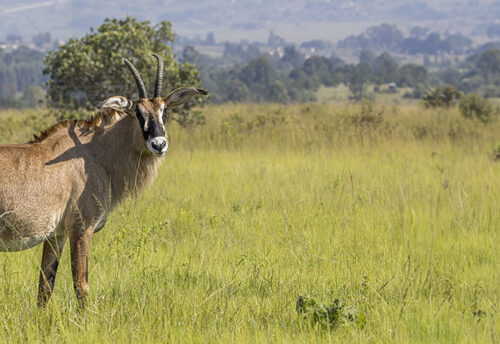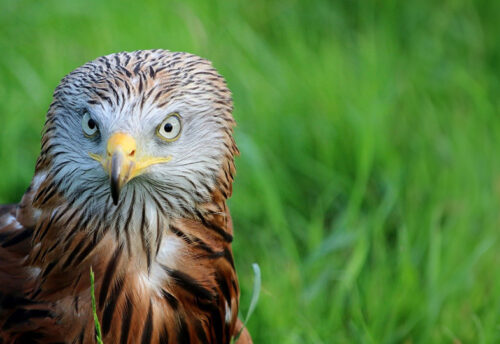
The shoebill also known as whalehead, is a very large stork-like bird that derives its name from its enormous shoe-shaped bill. They are falsely called storks because they are actually part of the Pelecaniformes (pelicans) family. Sadly, these totally “metal” birds are listed as Vulnerable by the IUCN. This is due to habitat destruction, human intrusion, and climate change. This article is a special request from my friend, Sam.
First the Stats…
Scientific name: Balaeniceps rex
Weight: Up to 15.4 lbs.
Length: Up to 60 inches
Wingspan: Up to 8.6 feet
Lifespan: Up to 36 years
Now on to the Shoebill Facts!
1.) These birds are tough as they come. Even the stronger chick of the two will viciously attack and drive the weaker one out of the nest to die in the heat.
2.) Shoebills eat baby crocs, lungfish, catfish, and other fish they find in the murky stagnant water.
3.) After taking its prey bodily into its beak, the shoebill opens its bill just enough for its victim to poke its head out. Then, the shoebill clamps down again with its knife-edged beak and decapitates the thing before swallowing it whole. I told you they were metal.
4.) The shoebill can sit motionless for hours at a time until it is ready to plunge its head into the swampy water and snatch up its prey.
5.) They poop on their legs to keep cool in the hot African swamps and jungles!
But wait, there’s more!
6.) Shoebills spend most of their time alone, until mating season.
7.) The big beak is sometimes used to dig into pond-bottom mud to extract lungfish from their aestivation burrows.
8.) Fledging is reached at around 105 days and the young birds can fly well by 112 days. However, they are still fed for possibly a month or more after this.
9.) The shoebill is normally silent, but they perform bill-clattering displays at the nest. Adult birds have also been noted to utter a cow-like moo as well as high-pitched whines.
10.) The population is estimated at between 3,300 – 5,300 individuals. The majority of which live in swamps in Sudan, Uganda, eastern Democratic Republic of the Congo, Zambia, and the Malagarasi wetlands in Tanzania.
Now a Short Shoebill Video!
This video is courtesy of Avibirds.
Listen to Their Crazy Sounds!
Want to suggest a critter for me to write about? Let me know here.



